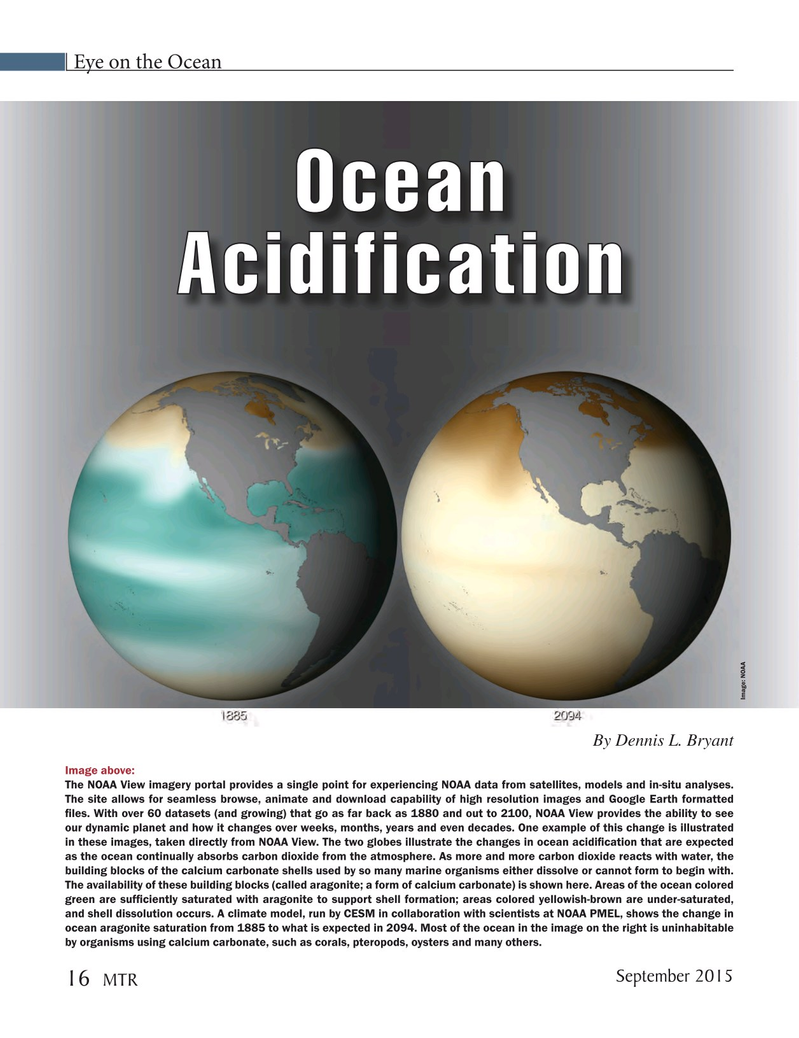
Page 16: of Marine Technology Magazine (September 2015)
Ocean Observation: Gliders, Buoys & Sub-Surface Networks
Read this page in Pdf, Flash or Html5 edition of September 2015 Marine Technology Magazine
Eye on the Ocean
OceanOcean
AcidificationAcidification
Image: NOAA
By Dennis L. Bryant
Image above:
The NOAA View imagery portal provides a single point for experiencing NOAA data from satellites, models and in-situ analyses.
The site allows for seamless browse, animate and download capability of high resolution images and Google Earth formatted ? les. With over 60 datasets (and growing) that go as far back as 1880 and out to 2100, NOAA View provides the ability to see our dynamic planet and how it changes over weeks, months, years and even decades. One example of this change is illustrated in these images, taken directly from NOAA View. The two globes illustrate the changes in ocean acidi? cation that are expected as the ocean continually absorbs carbon dioxide from the atmosphere. As more and more carbon dioxide reacts with water, the building blocks of the calcium carbonate shells used by so many marine organisms either dissolve or cannot form to begin with.
The availability of these building blocks (called aragonite; a form of calcium carbonate) is shown here. Areas of the ocean colored green are suf? ciently saturated with aragonite to support shell formation; areas colored yellowish-brown are under-saturated, and shell dissolution occurs. A climate model, run by CESM in collaboration with scientists at NOAA PMEL, shows the change in ocean aragonite saturation from 1885 to what is expected in 2094. Most of the ocean in the image on the right is uninhabitable by organisms using calcium carbonate, such as corals, pteropods, oysters and many others.
September 2015 16
MTR
MTR #7 (1-17).indd 16 MTR #7 (1-17).indd 16 9/1/2015 9:46:55 AM9/1/2015 9:46:55 AM

 15
15

 17
17
